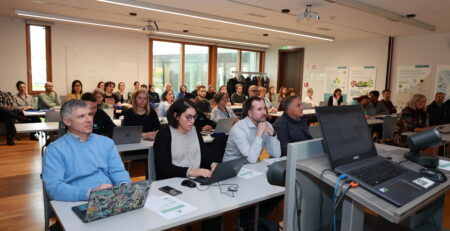Stakeholders: who are they and why are they important?
Author: Raquel Moreno and Ioanna Deligkiozi, from AXIA Innovation.
Stakeholders are the VIP (Very Important Persons) in a specific project or idea, as they are interested in the project, they can influence it or be affected by it, directly or indirectly.
Stakeholders are known as key actors, target audience, target groups or interested parties
The role of a stakeholder is to support a project, process, idea, or a company´s development, on the achievement of the strategic targets and goals, and ultimately, to succeed. That´s why it is important to involve as many stakeholders as possible, in the best efficient way, to share knowledge and engage with them.
The key is to engage the right people on the right matters at the right time
Therefore, it is crucial to analyse who the stakeholders are and categorise them according to their power, interests, and expectations, to better understand how they can impact the project. While identifying the stakeholders, it is also helpful to know who the enablers and supporters are and who could be the potential blockers, as this categorisation will minimise the potential risks. This analysis is called stakeholder mapping and other factors such as the geographical location of the stakeholders, and the engagement term (short-medium-long) are also considered. The engagement with the stakeholders will support the prioritisation of actions and goals.
Stakeholders can be individuals, groups, or institutions and organisations that will provide experience, skills, and other types of capacities, and depending on their nature could participate in the decision-making process.
In SurfBio, the relevant stakeholders will be engaged at a local, regional and European level in order to identify regulatory gaps, hazards related to upcoming innovations, assessment tools or knowledge that can be transferred to the industry. The following stakeholders have been categorised:
- Industry and SME from health, food and agricultural sectors: technology users and/or suppliers, business associations, professional bodies, financial institutions.
- Authorities, Governmental, Policymakers, Standardisation and Regulators.
- Academia, Scientific Community and Researchers.
- Others: Consumer associations, Non-Profit Associations, Customers, General Public.

How do we engage with the stakeholders?
The stakeholder’s engagement is supported by a dissemination and communication plan, to facilitate the interaction and effectively engage with the stakeholders. Different channels, messages and dissemination tools shall be developed following the stakeholder´s categorisation. We cannot deal with academia in the same way that we will approach young students or consumer associations neither using the same means. Also, we should take into account the level of engagement we are seeking. There are three primary different levels of engagement when approaching the stakeholders:
- Monitor and Informing (mostly one-way communication): by spreading the main messages to make them widely known and understood, basically addressed to all the stakeholders to monitor them
- Dialogue and consultation: where the stakeholders answer and give their opinion to specific queries
- Involvement and co-production (close management): get the participation of strategic stakeholders, actively involved in the implementation

Although there are several methodologies commonly used when engaging stakeholders, some of the most known tools are: direct meetings, participatory workshops, interviews supported with questionnaires, surveys with closed or open questions, and roundtables with a facilitator. These will be selected based on the group of stakeholders we are approaching, and the objective of the engagement pursued, for example, knowledge exchange, new policy development, consensus, etc.












Leave a Reply